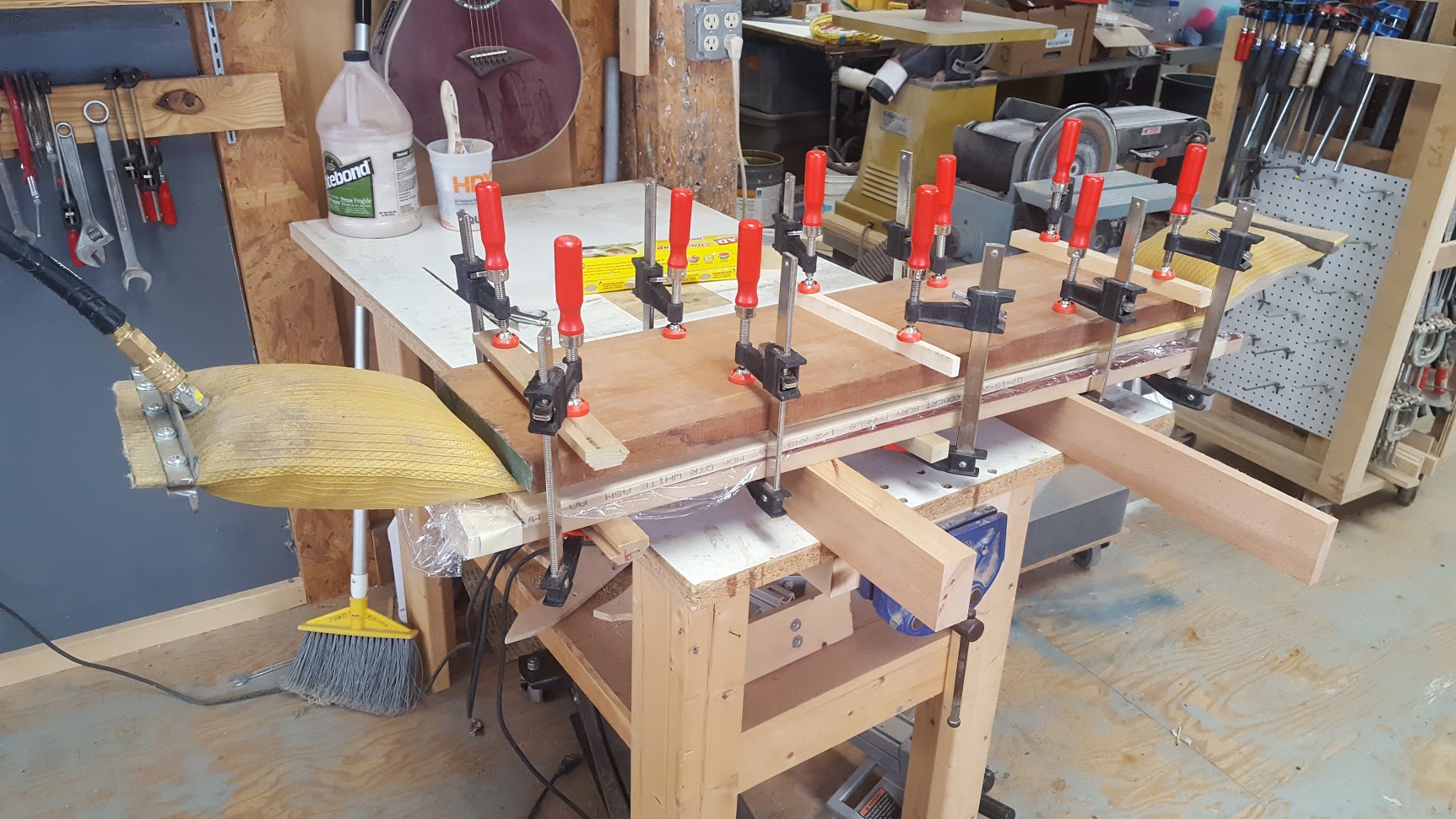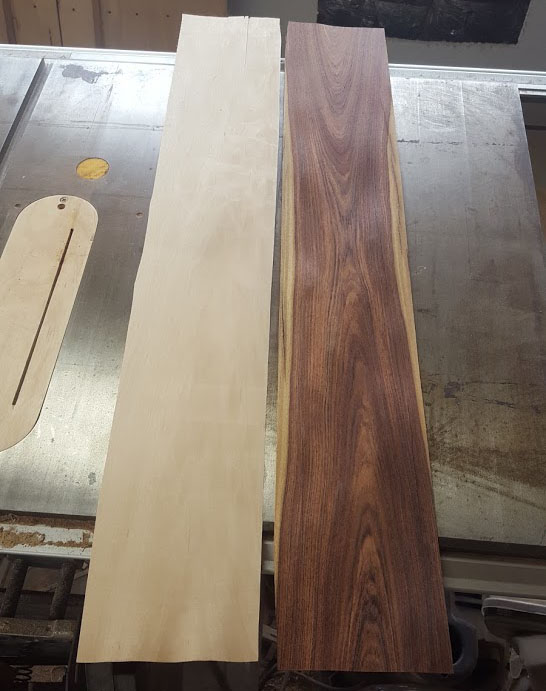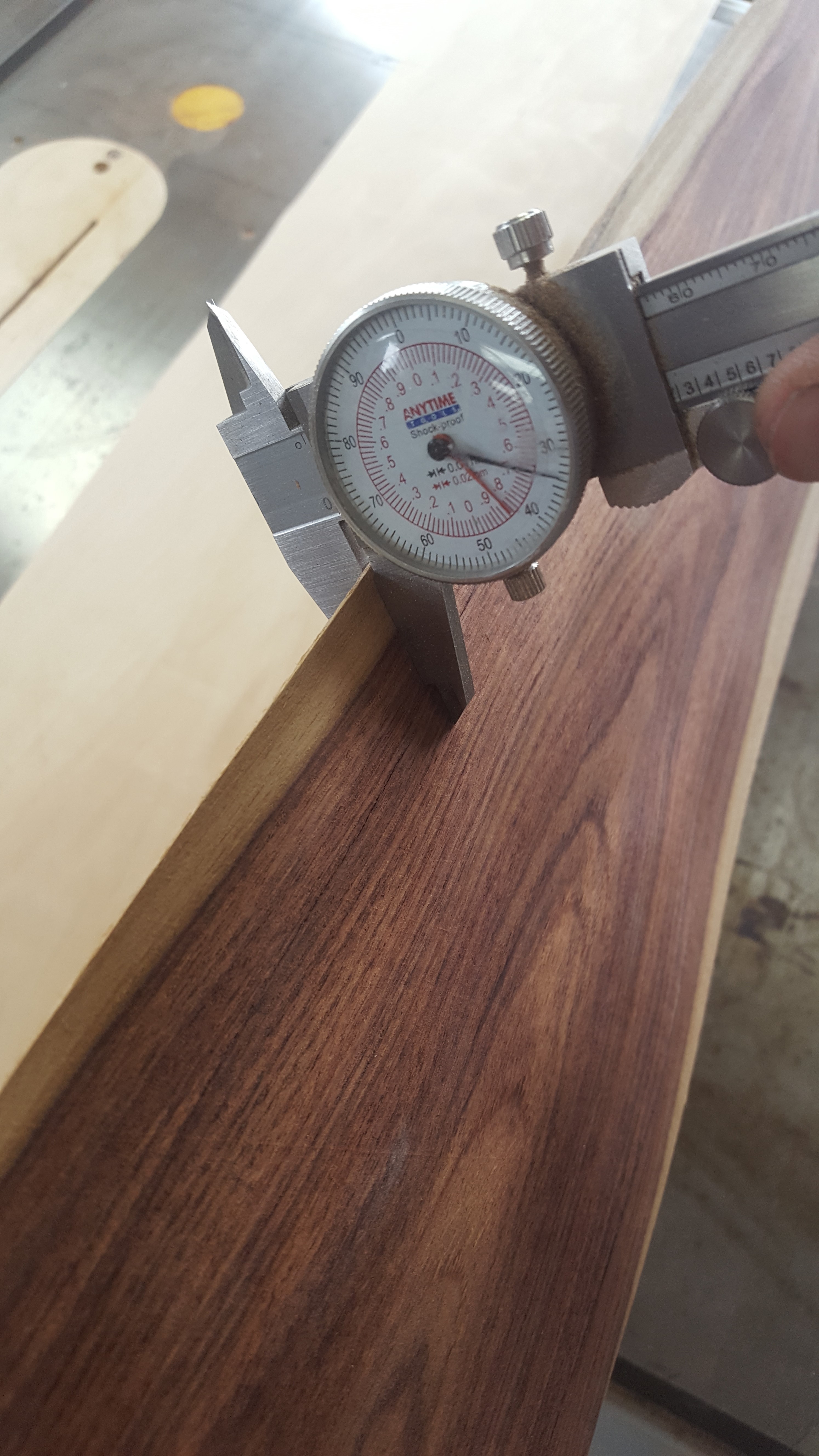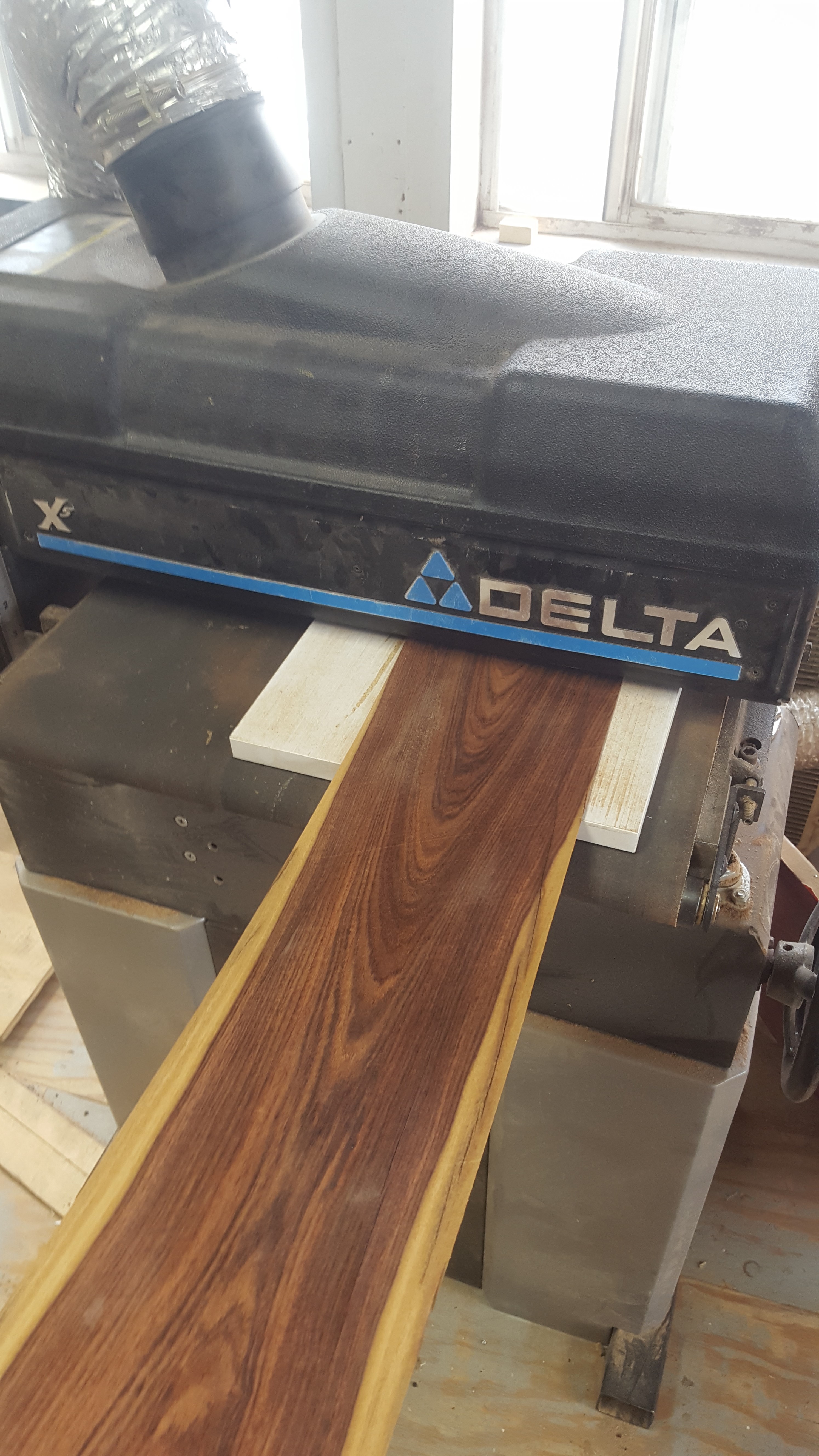Making Purfling
I've been making my own purfling for a while. It's actually really easy to do and doesn't require much more than a wide firehose, an air compressor, plywood and clamps.
These are the two pieces that we are going to laminate together. First I'm making sure they are the correct thickness. In this particular situation, I run a piece of material though the thickness sander first, then lower the table and manually feed the veneer to ensure perfectly even thickness.
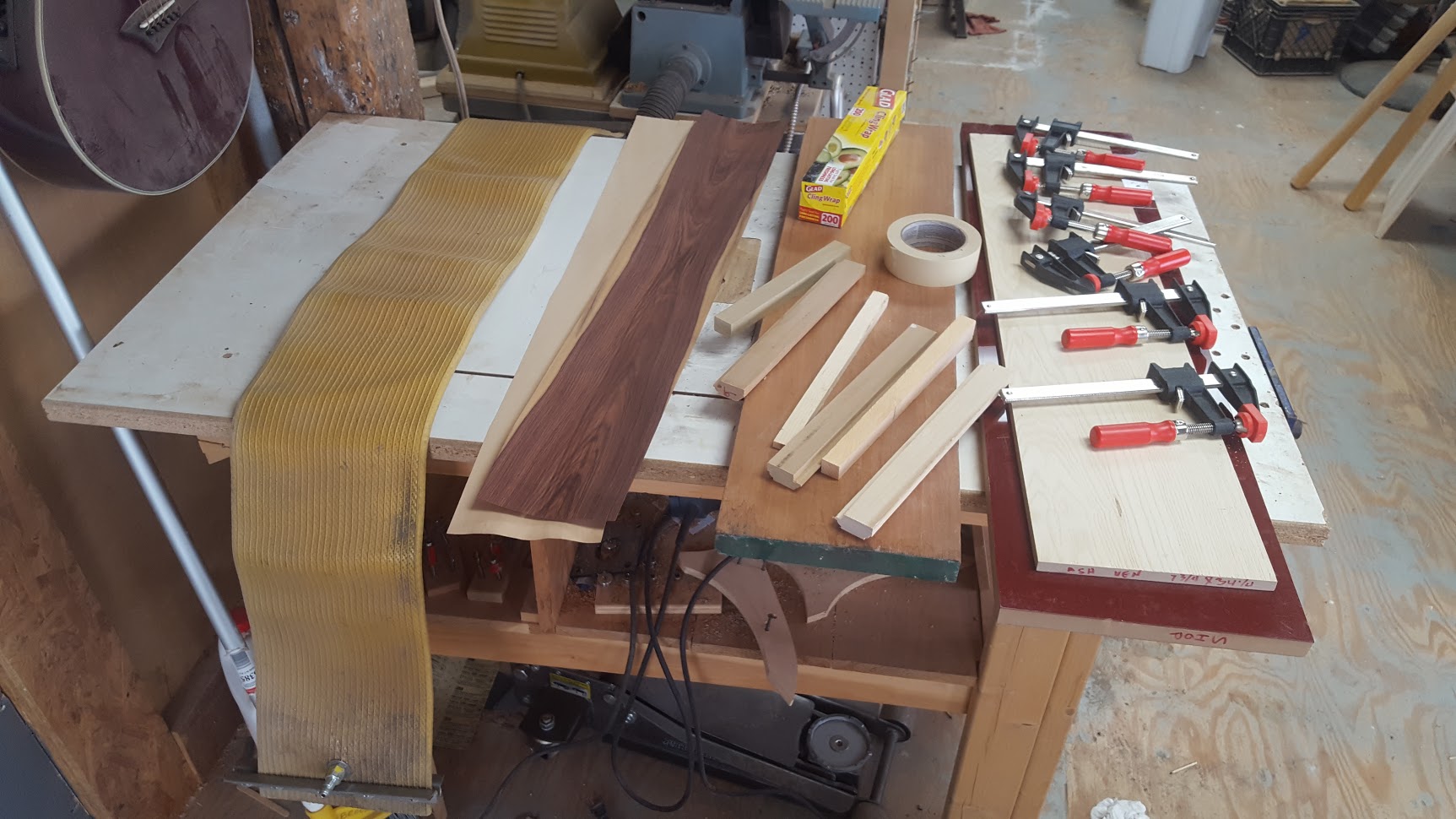
Here is basically all the stuff needed.


Applying a nice even spread of glue is key to avoiding glue pockets...I've found this stuff works best in this application. Avoid epoxy as it makes the purfling stiff.
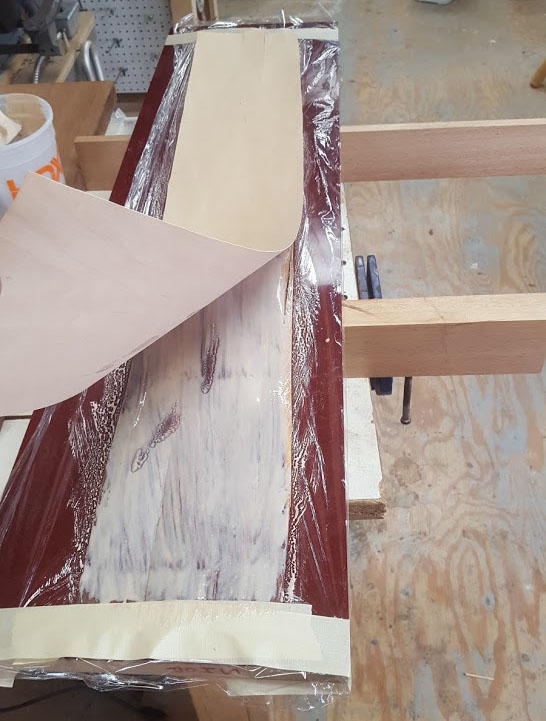

Notice the plastic wrap and tape. The tape keeps your veneer from curling over from the moisture and the plastic warp keeps everything clean.
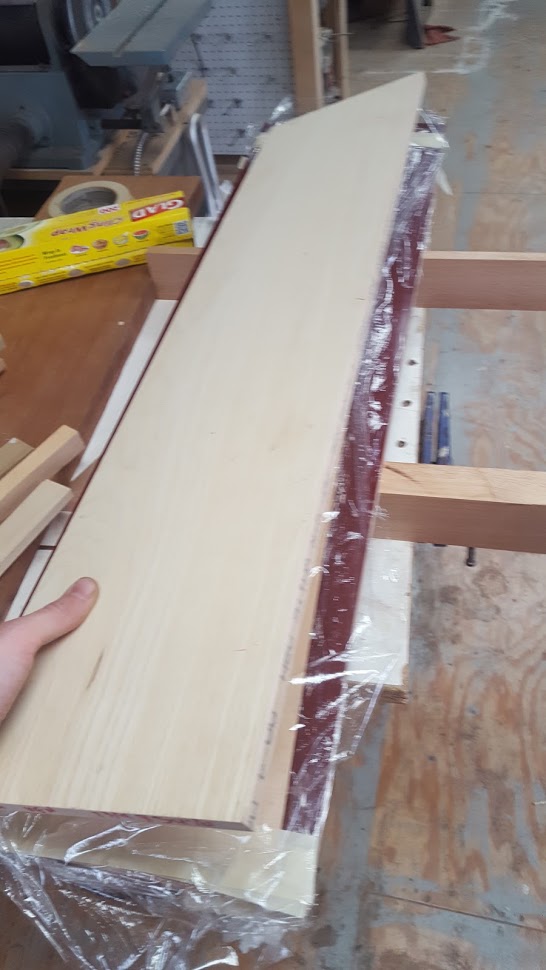
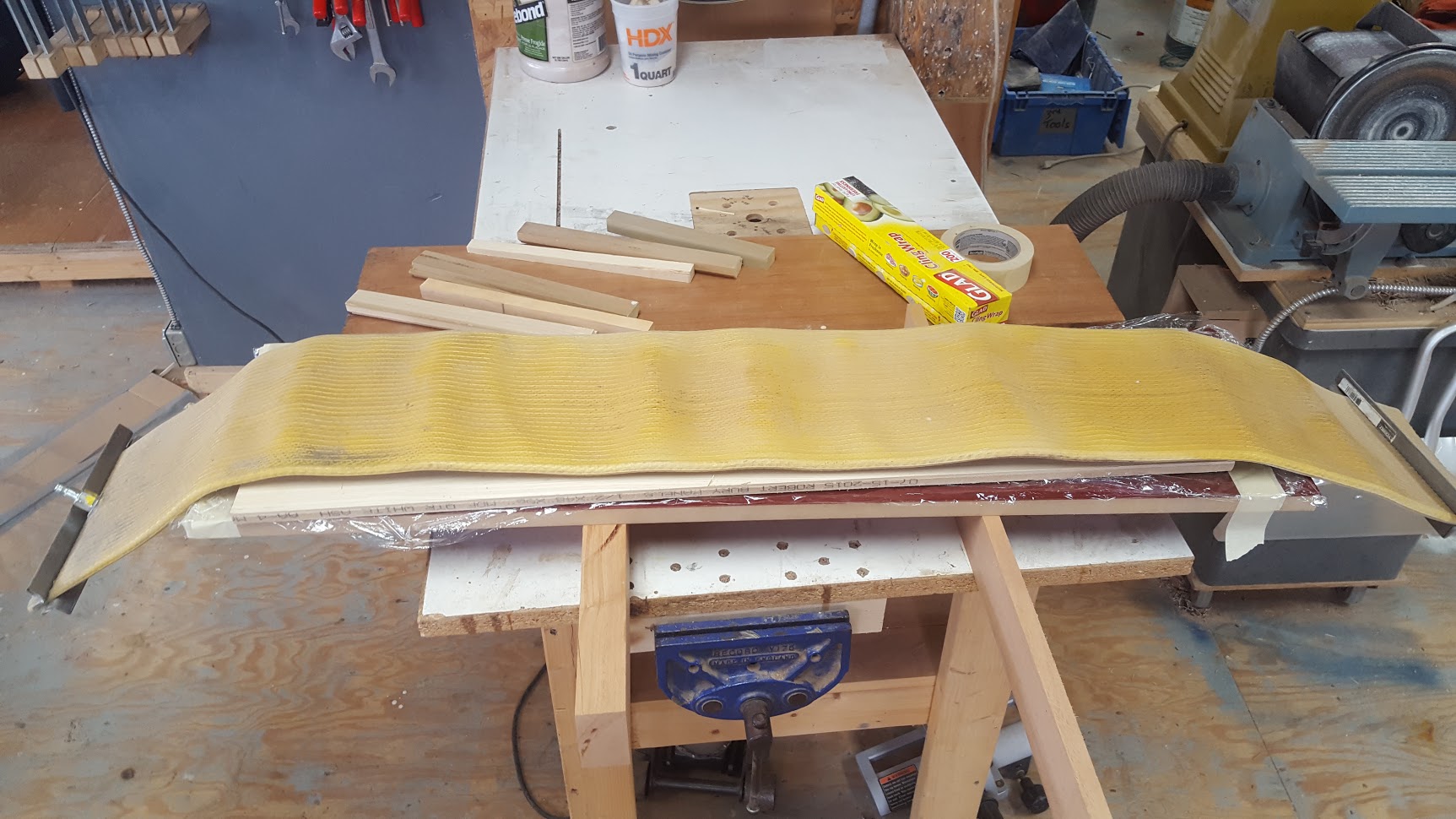
Add another piece of plastic, then put a piece of plywood (or any material with a nice smooth surface and flex to it) and the fire hose.
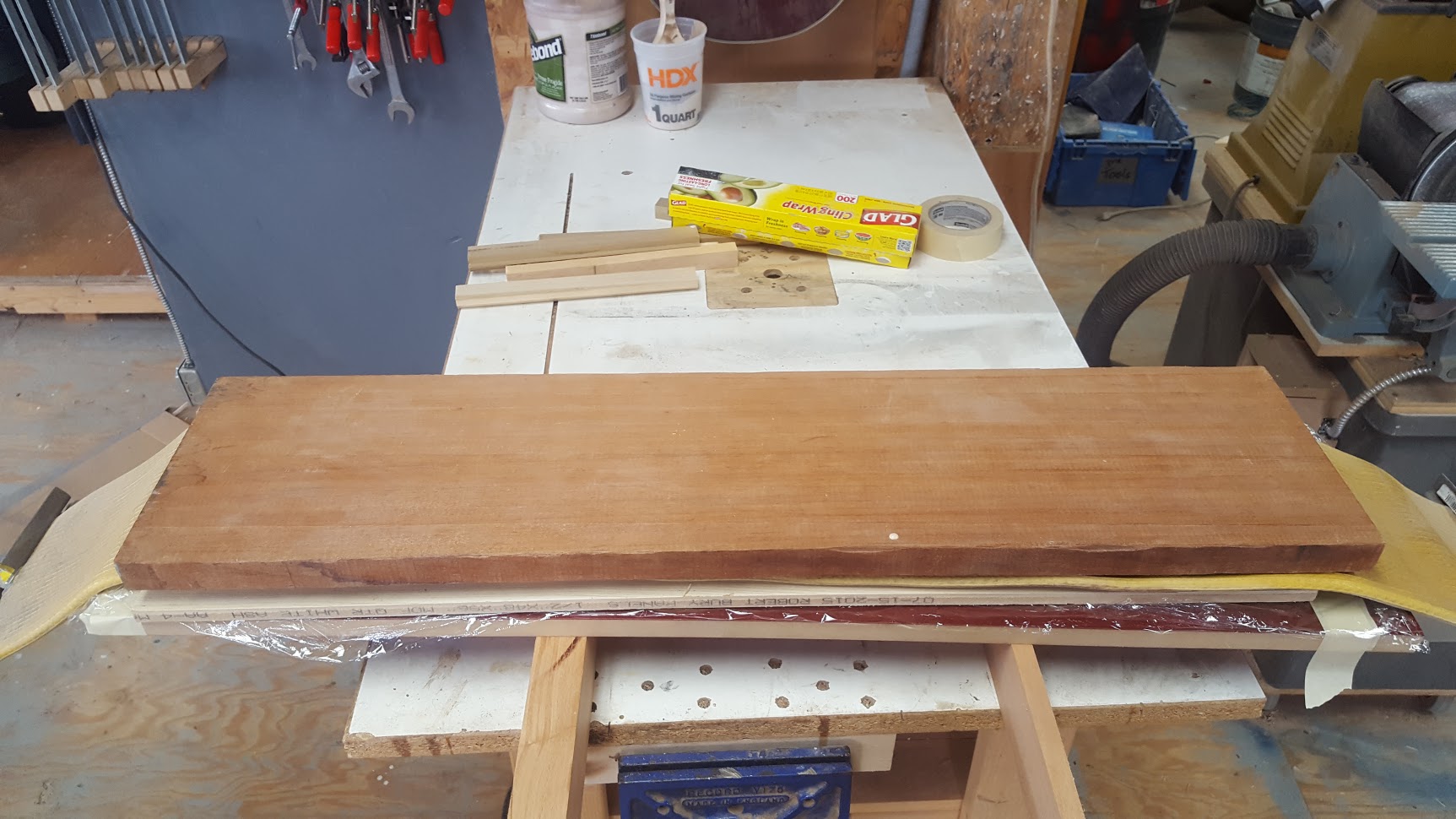
Put something solid on top to hold pressure. I'll usually just use whatever board I have laying around.
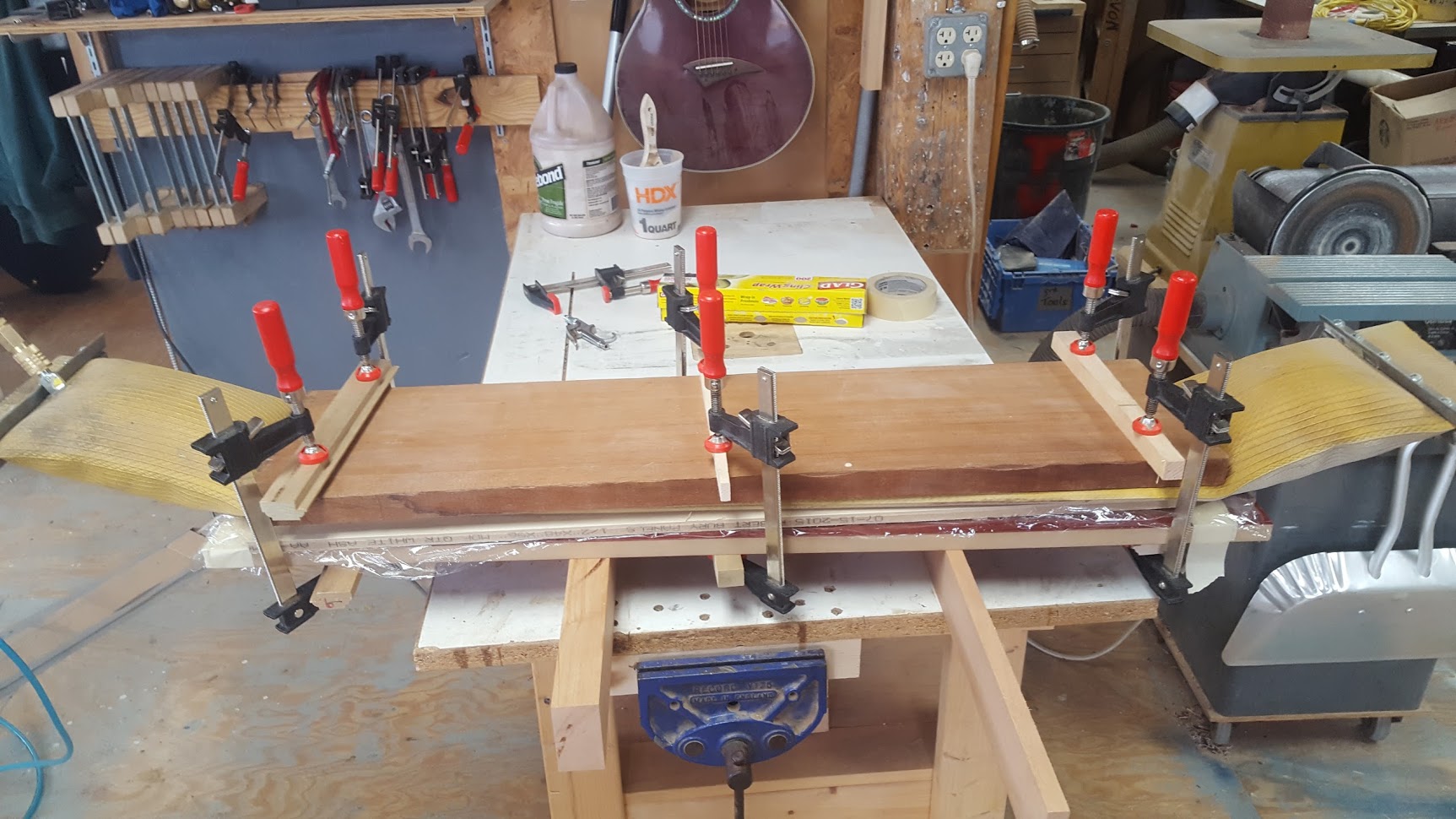
Clamp it up and add some pressure. I usually do about 2 or 3 psi...it really doesnt take much.
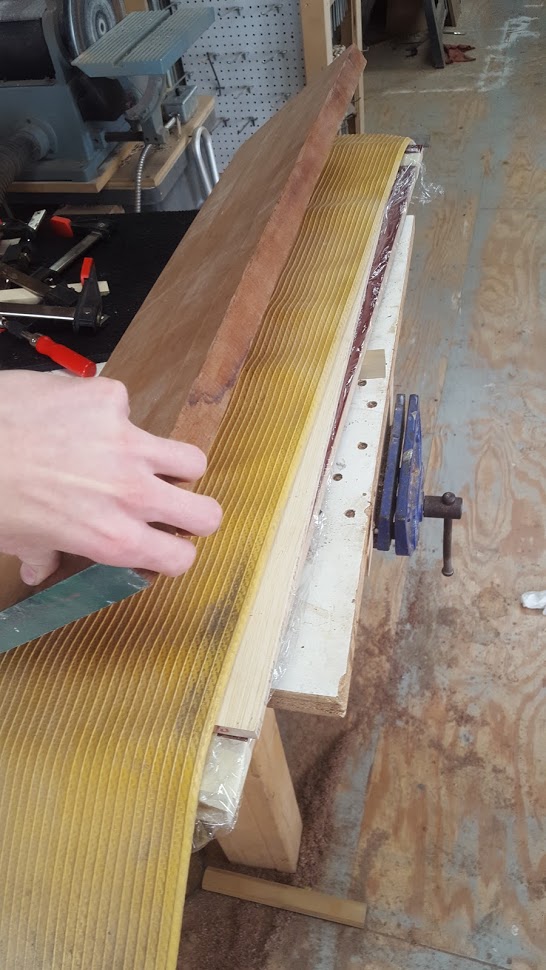
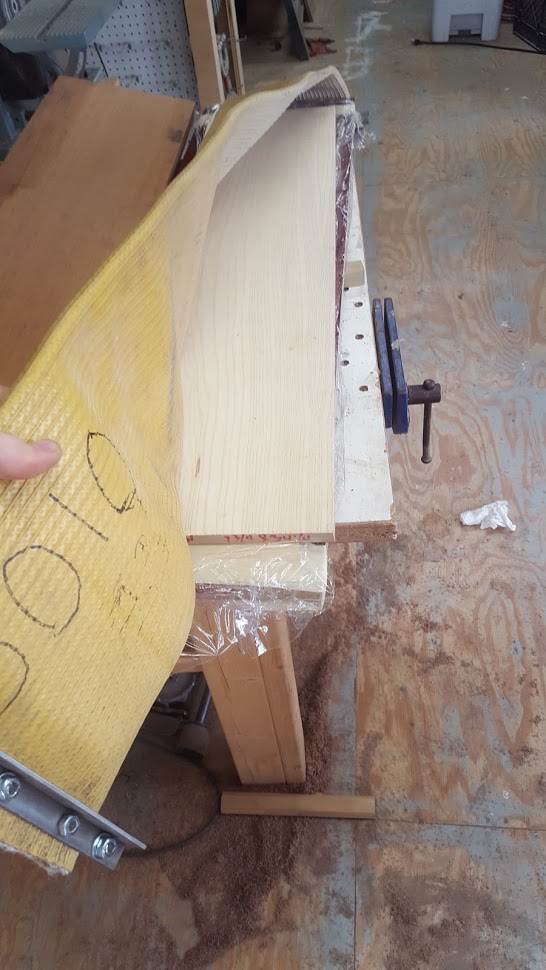
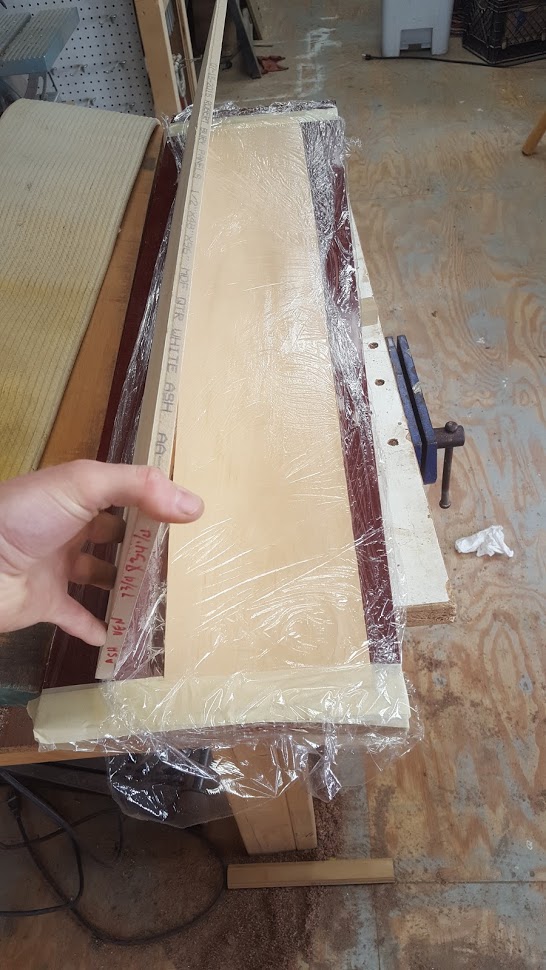
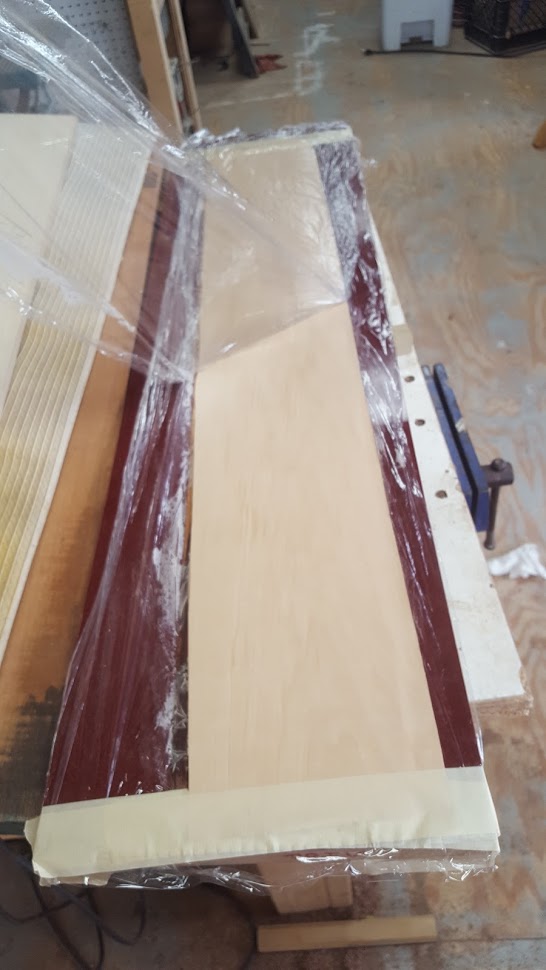
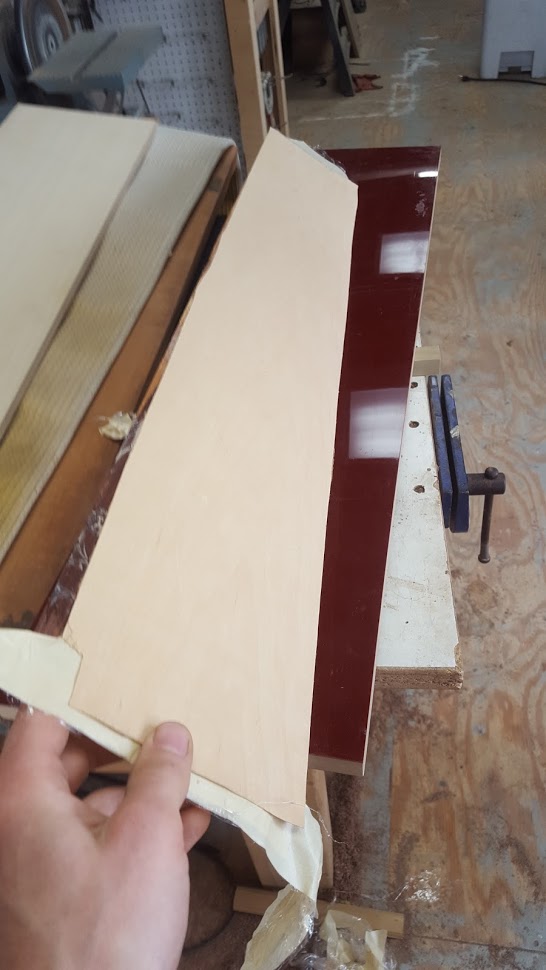
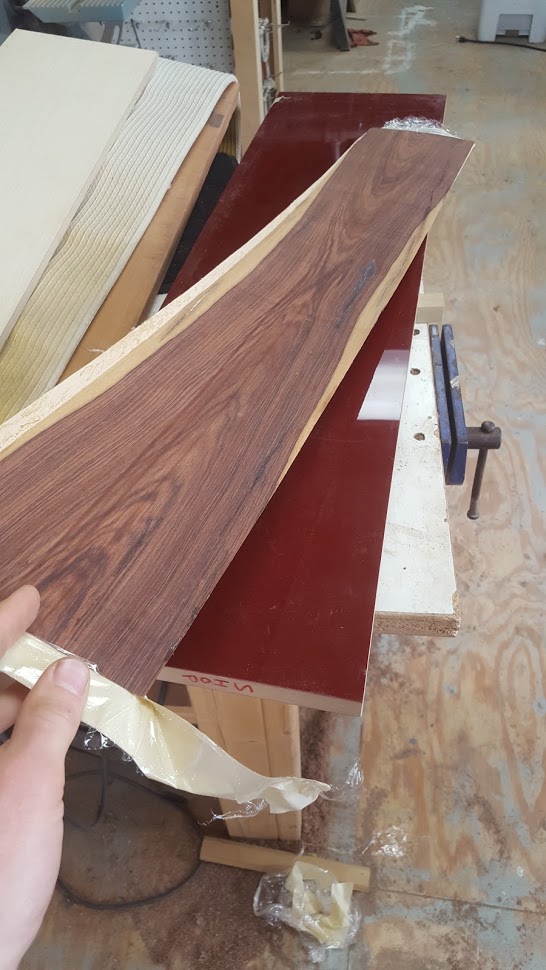
Wait at least 24 hours and take it apart. Because its sandwiched in plastic wrap, its going to feel pretty wet still. Despite this, I've never head any trouble after taking it out of the press.


True it up on the table saw with your blade of choice, and then slice it using a fret slotting saw.
Make sure you do this asap after taking it out of the press, otherwise it will warp.
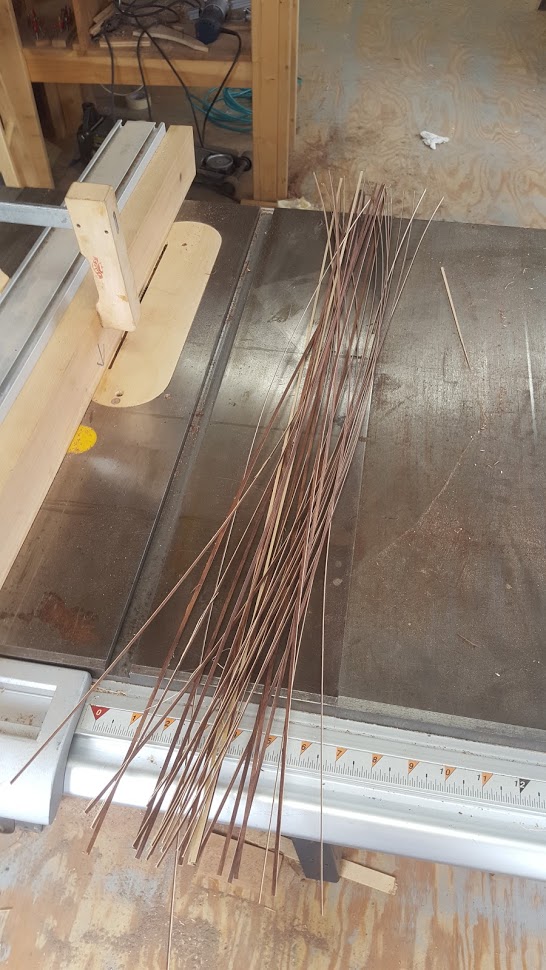
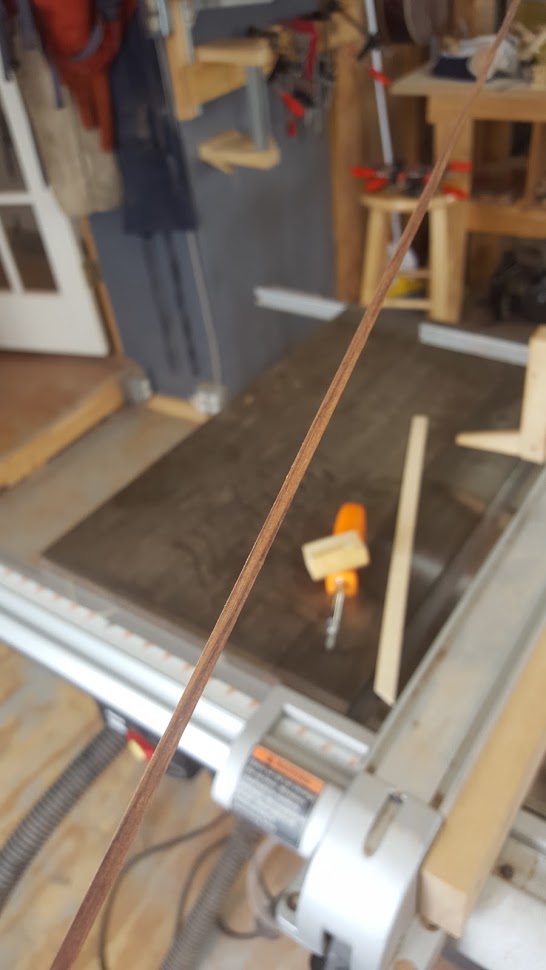
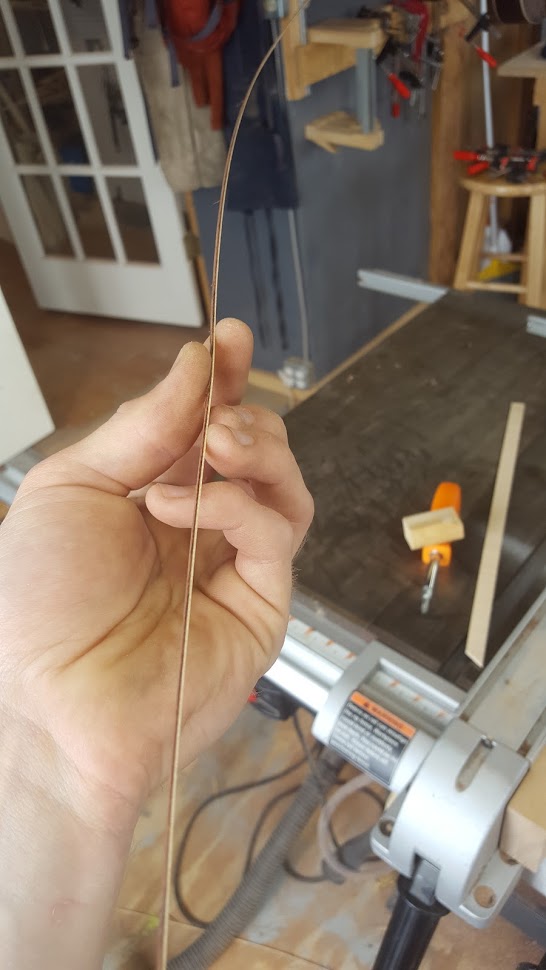
There it is!
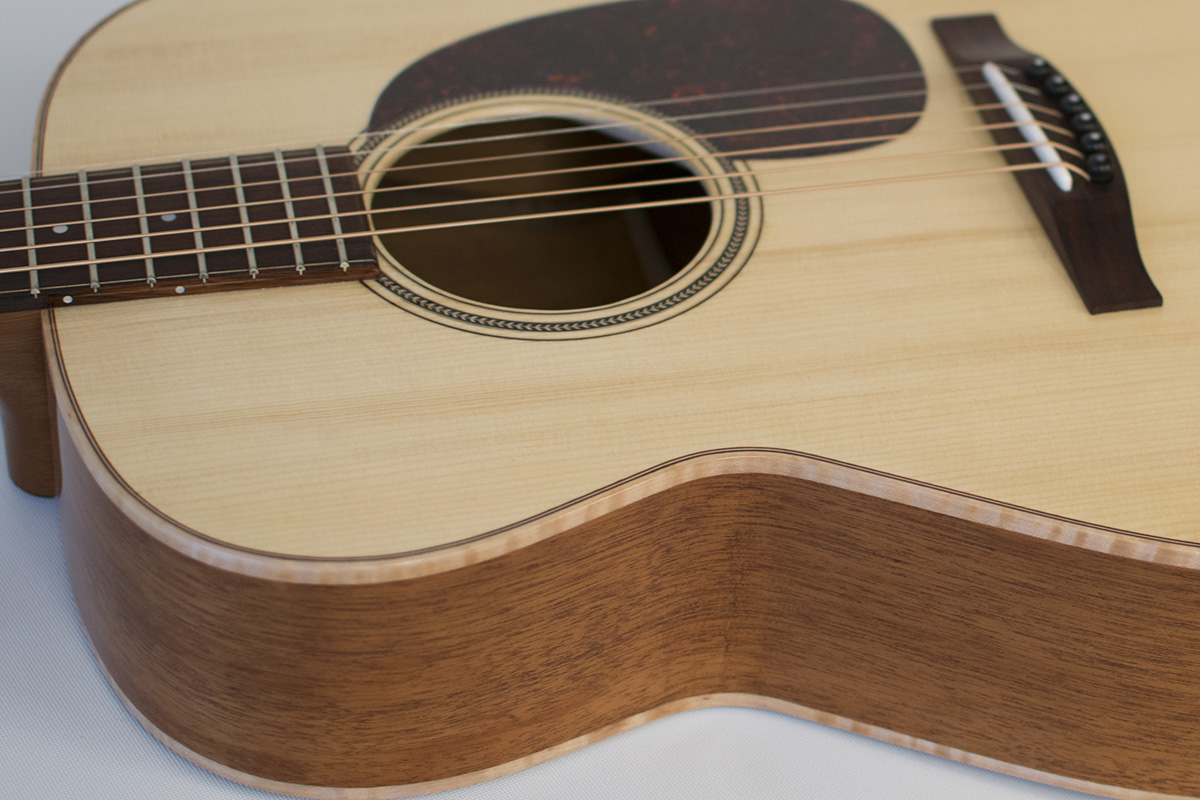
And this is what it looks like installed, except that this one has an additional dark lamination.
The Fire Hose
I use an 8" fire house I found on ebay. The air fitting on there is basically just some stuff found at Home Depot. I can't remember exactly what I used, but you should be able to find some way of doing this pretty easily. The important part is that you have a washer on the inside and outside squeezed together tightly. I even added some epoxy to seal it up.
The ends of the fire hose are just clamped with angle iron, nuts, and bolts. No sealant was used and it holds air fine.
